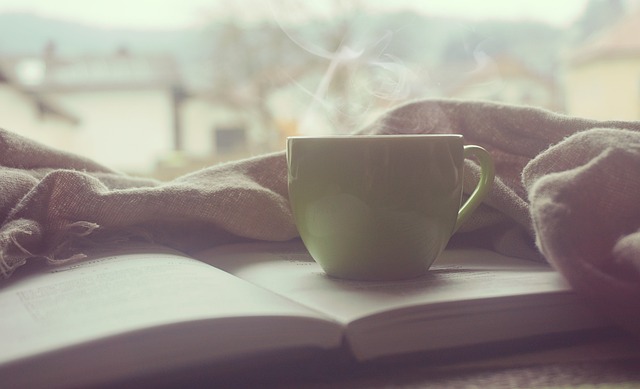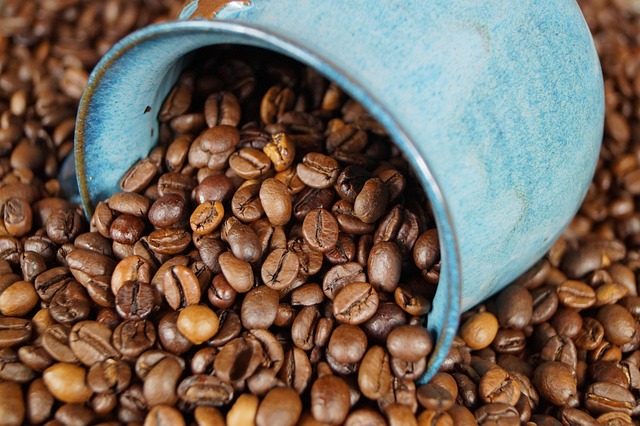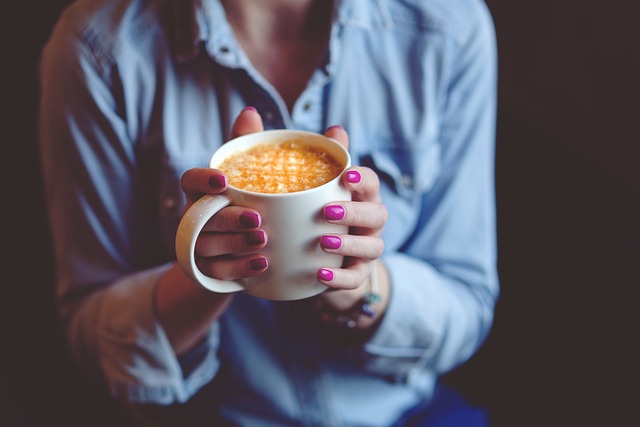When it comes to brewing a delicious cup of coffee using a French press, understanding the ideal amount of ground coffee to use is crucial. The French press, also known as a press pot or plunger pot, is a classic brewing method that allows coffee enthusiasts to extract rich flavors and aromatic oils from the coffee beans. To achieve the perfect cup, it’s essential to strike the right balance between coffee-to-water ratio and brewing time. In this guide, we will explore the question, “How much ground coffee should I use for a single cup in a French press?” and delve into the technical aspects of this brewing technique. To determine the ideal coffee-to-water ratio, it’s important to consider personal taste preferences, coffee bean characteristics, and the size of your French press. However, as a general guideline, a ratio of 1:15 to 1:17 is commonly recommended.
This means using 1 part coffee to 15-17 parts water. This ratio ensures a well-extracted, flavorful cup of coffee without overpowering or diluting the taste. For a single cup of coffee in a French press, which typically yields around 8 ounces (237 milliliters), a starting point could be using 15 grams of ground coffee. This measurement provides a balanced strength that suits most palates. However, feel free to adjust the amount based on personal preference. Now, let’s discuss the technicalities of measuring coffee using a scale. Using a scale instead of volume measurements, such as tablespoons, offers greater accuracy and consistency. A coffee scale with a precision of 0. 1 grams is recommended for precise measurements. By weighing the coffee, you can achieve a more controlled brewing process, resulting in a consistently excellent cup of coffee. Once you have your scale ready, place your French press on the scale and tare it to zero. This step ensures that only the coffee grounds’ weight is measured, excluding the weight of the French press itself. Add 15 grams of coarsely ground coffee to the French press. The coarseness of the grind is crucial in a French press to prevent excessive extraction and the presence of sediment in your brew. A coarse grind allows for a slower extraction process, resulting in a cleaner cup of coffee. After adding the coffee, it’s time to pour the water. For a single cup, aim for a water volume of 240 milliliters (8 ounces) at a temperature of around 195-205°F (90-96°C). The water temperature is crucial for proper extraction, as it affects the rate at which flavors are released from the coffee grounds. You can use a gooseneck kettle for better control while pouring the water.
Gently pour the hot water over the coffee grounds, ensuring all the grounds are fully saturated. Give the mixture a gentle stir with a spoon or a paddle to ensure even extraction. Place the plunger lid on top of the French press but do not press it down just yet. Let the coffee steep for about 4 minutes. This brewing time allows for optimal flavor extraction without over-extracting the coffee. After the steeping time has elapsed, slowly press the plunger down, separating the coffee grounds from the brewed coffee. Apply even pressure to avoid any unwanted sediments in your final cup. Once pressed, pour the freshly brewed coffee into your favorite mug or serving vessel. Remember that these guidelines serve as a starting point, and you can tweak the coffee-to-water ratio and brewing time to suit your personal taste. Some coffee enthusiasts prefer a stronger brew and may increase the coffee dosage or extend the steeping time slightly. Experimenting with different variables will help you find your perfect cup of French press coffee. In conclusion, brewing coffee in a French press requires careful consideration of the coffee-to-water ratio and other technical factors. For a single cup, starting with 15 grams of coarsely ground coffee and 240 milliliters (8 ounces) of water provides a well-balanced brew. Using a scale for precise measurements and ensuring the water temperature and brewing time are within the recommended ranges will help you achieve an exceptional cup of coffee with the French press method. Happy brewing!

Determining the right coffee measurement for different French press sizes
When it comes to the art of coffee brewing, the French press method has gained popularity among coffee enthusiasts worldwide. Its simplicity and ability to extract rich flavors make it a preferred choice for many. However, one crucial aspect of achieving the perfect cup of French press coffee lies in determining the right coffee measurement, especially when using different French press sizes. In this guide, we will delve into the intricacies of coffee brewing, providing you with the knowledge to master the art of determining the ideal coffee-to-water ratio for various French press sizes. French presses come in different sizes, ranging from single-serve options to larger models capable of brewing multiple cups at once. The key to achieving consistent and flavorful results is to maintain the correct coffee-to-water ratio. This ratio determines the strength and taste profile of your coffee, ensuring a satisfying and well-balanced brew.
To determine the optimal coffee measurement, you need to consider both the size of your French press and your personal preference regarding coffee strength. Typically, a standard rule of thumb is to use a coffee-to-water ratio of 1:15 to 1:17. This means for every gram of coffee, you’ll use 15 to 17 grams of water. However, it’s important to note that this ratio can be adjusted based on personal taste preferences. For smaller French press sizes, such as those designed for a single serving or two cups, a coffee-to-water ratio of 1:15 is often a good starting point. This ratio provides a stronger brew, highlighting the coffee’s flavors. For example, if your French press has a capacity of 350 milliliters, you would use approximately 23 grams of coffee for a robust and full-bodied cup. On the other hand, larger French press sizes, such as those with a capacity of 1 liter or more, may require a slightly higher water-to-coffee ratio to achieve a balanced and well-rounded flavor. A ratio of 1:16 or 1:17 can be employed to ensure a milder taste profile while still retaining the desired strength. For instance, if you have a 1-liter French press, you would use around 59 grams of coffee for a satisfying brew.
It’s important to note that these measurements serve as a general guideline and can be adjusted to suit personal taste preferences. Some coffee enthusiasts may prefer a bolder brew and choose to increase the coffee dosage slightly, while others may prefer a milder cup and decrease the coffee measurement accordingly. The key is to experiment with different ratios until you find the perfect balance that suits your palate. Additionally, factors such as coffee grind size and brew time can also influence the final taste of your French press coffee. For a balanced extraction, a coarse grind is generally recommended, as it allows for optimal flavor extraction without over-extracting the coffee grounds. Regarding brew time, a standard range of 4 to 5 minutes is often recommended, but this can be adjusted based on personal preference. In conclusion, determining the right coffee measurement for different French press sizes is a vital step in brewing a flavorful and satisfying cup of coffee. By following the general guidelines of a coffee-to-water ratio between 1:15 and 1:17 and adjusting based on personal taste preferences, you can unlock the full potential of your French press. Remember to experiment with different ratios, grind sizes, and brew times to discover your ideal combination. Happy brewing!

Does the type of coffee beans affect the coffee-to-water ratio in a French press?
In the realm of coffee brewing, the French press method stands as a beloved and traditional approach to extracting the flavorful essence of coffee. Central to this technique is the establishment of an optimal coffee-to-water ratio, which heavily influences the resulting taste, strength, and overall quality of the brewed coffee. While various factors contribute to achieving the perfect balance, one intriguing aspect that often captures the attention of coffee enthusiasts is the potential influence of different coffee bean types on the coffee-to-water ratio in French press brewing. This article delves into this topic, exploring whether the type of coffee beans employed does indeed affect the coffee-to-water ratio and shedding light on the significance of such variation. Understanding the Coffee-to-Water Ratio:
Before delving into the influence of coffee bean types, it is crucial to grasp the concept of the coffee-to-water ratio and its fundamental role in French press brewing. The coffee-to-water ratio refers to the proportion of coffee grounds to water used during the brewing process, determining the strength and flavor profile of the resulting beverage. It serves as a crucial parameter, directly impacting the extraction rate, solubility, and ultimately, the taste experience. Impact of Coffee Bean Types:
Coffee beans encompass a wide range of varieties, each possessing distinct characteristics, such as flavor notes, acidity levels, body, and aroma. These attributes are influenced by factors such as the coffee plant species, growing region, altitude, processing methods, and roasting profiles. As a result, it is reasonable to assume that the choice of coffee bean type can impact the optimal coffee-to-water ratio in French press brewing.
- Bean Size and Grind Consistency:
Different coffee bean types exhibit variations in terms of size and density. For instance, some beans are larger and denser than others. These discrepancies affect the grinding process, as beans of various sizes require adjustments in the grind size to ensure uniform extraction. Finer grinds are often suitable for smaller beans, while larger beans may necessitate coarser grinds. Consequently, the choice of coffee bean type can indirectly affect the coffee-to-water ratio by influencing the grind consistency and subsequently the extraction process. - Surface Area and Extraction Efficiency:
The surface area of coffee grounds is a critical factor in determining the extraction efficiency during French press brewing. Finely ground coffee offers a larger overall surface area compared to coarser grinds. Consequently, finer coffee grounds tend to extract more quickly and extensively, resulting in a stronger brew. On the other hand, coarser grinds offer a smaller surface area, leading to a slower and less intense extraction. As different coffee bean types can require varying grind sizes, they can impact the overall surface area and, consequently, the coffee-to-water ratio required to achieve the desired strength and flavor profile. - Flavor Profile and Strength:
Coffee beans from different regions or with distinct processing methods can possess unique flavor profiles, ranging from fruity and floral to nutty or chocolaty. The flavor characteristics inherent to specific coffee bean types may necessitate adjustments in the coffee-to-water ratio to achieve a balanced and enjoyable brew. For instance, beans with intense flavor profiles may require a higher coffee-to-water ratio to avoid overpowering the taste, while milder beans may demand a lower ratio to enhance their subtler nuances. Thus, the type of coffee beans can significantly impact the desired strength and flavor outcome, ultimately influencing the appropriate coffee-to-water ratio.

Tips for achieving the perfect strength and flavor with your French press coffee
French press brewing is a popular method for coffee enthusiasts who desire a rich, full-bodied cup of java. With its simple yet effective design, the French press allows for maximum extraction of flavor and aroma from coffee grounds. In this guide, we will explore essential tips to help you achieve the perfect strength and flavor with your French press coffee, elevating your brewing skills to new heights.
- Selecting the Right Coffee Beans:
To begin your French press journey, it is crucial to choose high-quality coffee beans. Opt for freshly roasted beans that are well-suited to your taste preferences. Consider the roast level, origin, and flavor notes to ensure a delightful brewing experience. - Grinding for French Press:
To achieve the desired strength and flavor, it’s essential to grind your coffee beans to the correct size. For the French press, a coarse grind is ideal, as it allows for optimal extraction and minimizes the risk of over-extraction. Aim for a consistency similar to breadcrumbs to ensure a consistent and even extraction. - Preheating the French Press:
Preheating the French press before brewing is often overlooked but can significantly impact the final flavor. By rinsing the French press with hot water, you can ensure that the brewing temperature remains stable throughout the process, preventing heat loss and maximizing extraction. - Coffee-to-Water Ratio:
Finding the right coffee-to-water ratio is key to achieving the desired strength and flavor. A common guideline is to use a ratio of 1:15, which means one part coffee to 15 parts water. However, feel free to adjust this ratio based on personal preference. Experimentation is the key to discovering your perfect balance. - Water Quality and Temperature:
Water quality plays a vital role in the taste of your coffee. Opt for filtered or spring water to avoid any unwanted flavors or impurities. Additionally, ensure that the water temperature is between 195°F and 205°F (90°C and 96°C) when you pour it over the coffee grounds. This range allows for optimal extraction, resulting in a well-balanced and flavorful brew. - Blooming the Coffee:
Blooming refers to the process of saturating the coffee grounds with a small amount of hot water and allowing them to release trapped gases. To bloom your French press coffee, pour just enough water to saturate the grounds, then let it sit for about 30 seconds. This step enhances the flavors and aromas, leading to a more complex cup of coffee. - The Brewing Process:
Once the coffee has bloomed, slowly pour the remaining water over the grounds, ensuring that all the coffee is saturated. Place the lid on the French press but do not plunge immediately. Allow the coffee to steep for about four minutes. This duration can be adjusted based on your preference for strength. Longer steeping times will result in a bolder cup, while shorter times will yield a milder brew. - Plunging and Pouring:
After the desired steeping time, firmly press the plunger down to separate the brewed coffee from the grounds. Take care not to rush this step, as a slow and steady plunge will prevent any grounds from escaping into the final cup. Once plunged, immediately pour the coffee into your cup to avoid over-extraction and bitterness. - Serving and Enjoying:
French press coffee is best enjoyed immediately after brewing to savor its vibrant flavors. Pour the coffee into preheated cups and avoid leaving it in the press, as the coffee will continue to extract and may become overly bitter. Take a moment to appreciate the aroma and complexity of your creation before indulging in each flavorful sip.

Common mistakes to avoid when measuring coffee for a French press
When it comes to brewing coffee in a French press, measuring the right amount of coffee is crucial for achieving a flavorful and well-balanced cup. However, many coffee enthusiasts often make common mistakes that can compromise the taste and overall experience. In this guide, we will explore some of these mistakes and provide you with essential tips to ensure you measure your coffee correctly for a French press.
- Neglecting the Coffee-to-Water Ratio: One of the most critical aspects of brewing coffee is maintaining the right ratio of coffee to water. Many people tend to eyeball or estimate this ratio, leading to inconsistent results. To avoid this mistake, it is essential to follow a standard guideline, which suggests a coffee-to-water ratio of 1:15 to 1:17. For example, if you use 30 grams of coffee, aim for 450 to 510 grams of water.
- Using Inaccurate Measuring Tools: Accurate measurement is key to achieving consistency in your coffee brewing. Using imprecise or inconsistent measuring tools can lead to variations in the amount of coffee used. Invest in a reliable kitchen scale that measures in grams for precise measurements. Avoid relying on volume-based measurements like tablespoons, as coffee beans can have different densities, resulting in inaccurate measurements.
- Grinding Coffee Improperly: The grind size of coffee plays a significant role in the extraction process. Grinding your coffee too finely or coarsely can result in over or under-extraction, leading to an imbalanced and weak or bitter cup. For French press brewing, a coarse grind is ideal to prevent the grounds from passing through the metal mesh filter. Invest in a burr grinder to achieve a consistent coarse grind.
- Overlooking the Freshness of Coffee: Using stale or old coffee beans can negatively impact the flavor of your brew. Coffee beans are at their best within a few weeks of the roast date. Avoid purchasing pre-ground coffee, as it tends to lose its freshness quickly. Instead, buy whole beans and grind them just before brewing to ensure maximum flavor and aroma.
- Ignoring Bloom Time: Blooming refers to the process of allowing coffee grounds to release trapped gases before brewing. Neglecting this step can lead to uneven extraction and a subpar cup of coffee. After adding water to the French press, allow the coffee to bloom for about 30 seconds by giving it a gentle stir. This allows the coffee grounds to degas, resulting in a more even extraction.
- Neglecting Brew Time: Brewing coffee in a French press involves steeping the grounds in hot water for a specific duration. However, many coffee enthusiasts overlook the importance of timing and end up with under or over-extracted coffee. The optimal brew time for a French press is around 4 to 5 minutes. Adjust the brew time according to your taste preferences, but avoid extending it too much, as it may result in a bitter brew.


With this post, you have rekindled my passion for this topic. I want to learn more!